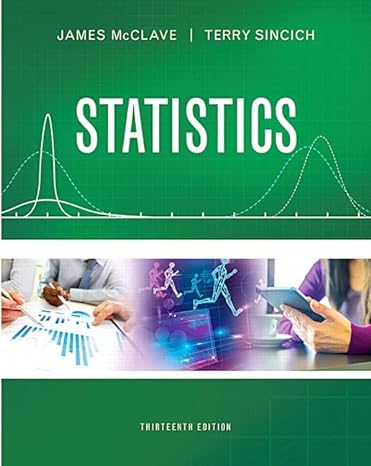Bus rapid-transit study. The Center for Urban Transportation Research (CUTR) at the University of South Florida conducted
Question:
Bus rapid-transit study. The Center for Urban Transportation Research (CUTR) at the University of South Florida conducted a survey of Bus rapid transit
(BRT) customers in Miami (Transportation Research Board Annual Meeting, Jan. 2003). Data on the following variables (all measured on a five-point scale, where 1 = “very unsatisfied” and 5 = “very satisfied”) were collected for a sample of over 500 bus riders: overall satisfaction with BRT (y), safety on bus 1x12, seat availability 1x22, dependability 1x32, travel time 1x42, cost 1x52, information/maps 1x62, convenience of routes 1x72, traffic signals 1x82, safety at bus stops 1x92, hours of service 1x102, and frequency of service 1x112. CUTR analysts used stepwise regression to model overall satisfaction (y).
a. How many models are fitted at step 1 of the stepwise regression?
b. How many models are fitted at step 2 of the stepwise regression?
c. How many models are fitted at step 11 of the stepwise regression?
d. The stepwise regression selected the following eight variables to include in the model (in order of selection):
x11, x4, x2, x7, x10, x1, x9, and x3. Write the equation for E(y) that results.
e. The model in part d was tested and resulted in R2
= .677. Interpret this value.
f. Explain why the CUTR analysts should be cautious in concluding that the “best” model for E(y) has been found.
Step by Step Answer:

Statistics Plus New Mylab Statistics With Pearson Etext Access Card Package
ISBN: 978-0134090436
13th Edition
Authors: James Mcclave ,Terry Sincich





